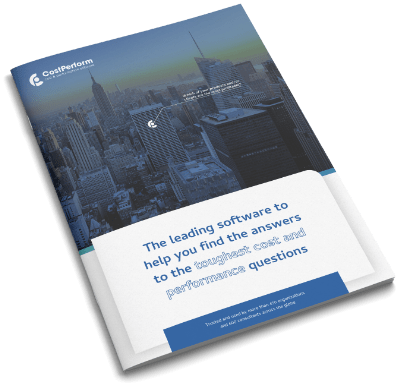Effective cost management is a paramount concern in today’s rapidly evolving business environment. The capacity to comprehend resource allocation and optimize expenditures has become a defining factor in an organization’s success. Enter multi-dimensional cost analysis, a comprehensive approach that considers various cost drivers and factors to provide organizations a nuanced understanding of their expenses. In this blog, we will uncover the core principles, explore the manifold benefits, and tell you about the implementation of multi-dimensional cost analysis.
Understanding Multi-Dimensional Cost Analysis
Understanding multi-dimensional cost analysis is the gateway to financial well-being and a competitive advantage in today’s ever-changing business landscape. It’s a comprehensive approach that transcends traditional cost assessment methods, offering a dynamic perspective on cost drivers and factors within an organization. This approach empowers businesses to make informed, data-driven decisions, enhancing efficiency, profitability, and long-term sustainability. Multi-dimensional cost analysis takes a holistic view of expenses. It acknowledges that costs are influenced by a multitude of factors, including time, volume, and activities.
Understanding is the first step toward harnessing its potential. With this comprehensive approach, organizations can gain a more profound understanding of their cost structures and make data-driven decisions that lead to improved efficiency and profitability.
Benefits of Multi-Dimensional Cost Analysis
Besides understanding what multi-dimensional cost analysis is, it’s important to explore the benefits it brings to organizations.
Enhanced Cost Transparency and Accuracy
One significant benefit of multi-dimensional cost analysis is the improved transparency it offers into an organization’s cost structure. By factoring in various costs, drivers, and elements, it provides a more precise view of expenses, making it easier to spot inefficiencies and optimization prospects that traditional methods may overlook. This precision in cost data empowers organizations to make informed financial decisions.
Empowered decision-making and strategic planning
Traditional cost analysis falls short in providing in-depth insights into cost drivers, making informed decisions a challenge. In contrast, multi-dimensional cost analysis offers a nuanced understanding of how several factors impact expenses. This empowers decision-makers to align strategies with financial goals, be it optimizing processes, reallocating resources, or identifying cost-saving opportunities.
Optimized cost allocation and resource optimization
Cost allocation – particularly in complex organizations – can be challenging. multi-dimensional cost analysis simplifies this by providing a precise approach. It offers a comprehensive view of cost drivers, enabling expenses to be allocated to specific areas based on actual resource usage. This improves allocation accuracy and directs resources to where they have the most impact.
Implementing this approach can significantly influence your organization’s financial health and competitive standing in today’s ever-evolving business landscape.
Implementing Multi-Dimensional Cost Analysis
How can organizations seamlessly integrate multi-dimensional cost analysis into their financial frameworks and derive maximum value from it? Let’s delve into the five most essential strategies that pave the path to success:
- Clear objectives and goals: establish clear objectives, and define their desired outcomes, such as improved cost transparency, resource optimization, or identifying cost-saving opportunities. These specific objectives provide a roadmap for implementation, allowing companies to tailor their approach to their unique needs and expectations.
- Data quality assurance: invest in strong data management and quality assurance practices – including regular audits and validation processes – to maintain reliable and consistent data, which is vital for the success of this approach.
- Cross-functional collaboration: a successful implementation requires cross-functional collaboration among IT professionals, financial experts, and business stakeholders. This ensures a well-rounded perspective, incorporating the needs and insights of various departments, resulting in more comprehensive data and effective decision-making.
- Continuous review and adaptation: regularly review the data and insights it provides and be ready to adjust their strategies and resource allocation as needed. Flexibility is key to responding to changing business dynamics and making the most of the insights garnered from multi-dimensional cost analysis
- Commitment to long-term strategy: multi-dimensional cost analysis is not a short-term fix; it’s a long-term strategy for organizations committed to optimizing costs and making informed decisions.
Conclusion
Multi-dimensional cost analysis is a powerful approach that empowers organizations to optimize costs, make informed decisions, and enhance their financial well-being. Organizations can seamlessly integrate this approach into their financial frameworks by adhering to best practices. It makes an asset in today’s dynamic business landscape. With dedication and a commitment to long-term strategy, organizations can unlock their full potential, resulting in improved cost management and a competitive edge.
